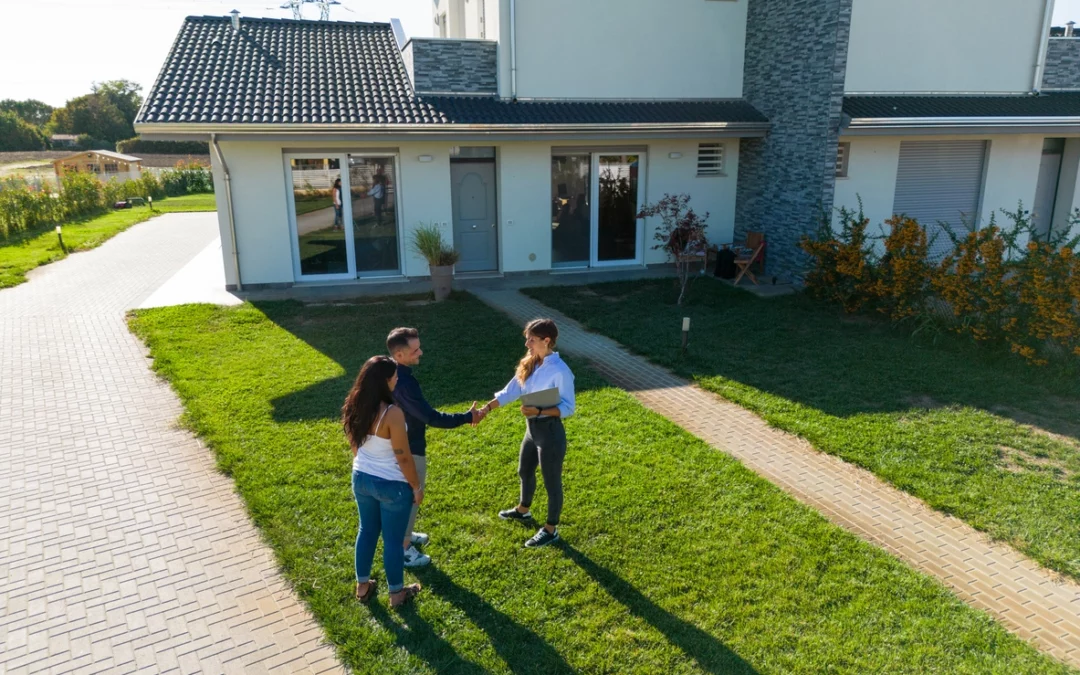Features > Property News & Insights > Housing Trends
The Australian Rental Market: Rising Rates and Decreasing Discounts

CoreLogic released their monthly housing chart pack this week and their chart of the month paints a painful picture for renters.
It revealed that the recent upward trend in rent rises is the longest period of growth since the one experienced from 2009 to 2013.
Rents have now risen for 35 months straight.

Over the past 12 months, rents across Australia have increased 9.4 percent, with the combined capitals clocking an 11.3 percent rise.
The rent rises come as record low vacancy rates plague the nation, particularly the capital cities, making it difficult to compete for and secure a home to live in.
Recent influxes of international students have exacerbated the situation, with an Australian think tank The Institute of Public Affairs finding that 70 percent of new housing added to the market last year was absorbed by international students.
Over 250,000 new international students were accepted into Australia last year – more than double the previous record of 122,000 in 2009, most of whom settled in capital cities.
While rents rise, discounting drops off
The added competition to secure a home has sent rents skyrocketing, and some experts have suggested that renters with the means have opted to buy their own homes, rather than stay in the competitive market.
But CoreLogic’s recent report shows that any window of opportunity for vendor discounts might have already passed, with discounting dropping from -4.4 percent late last year to -3.9 in the three months to July.
It coincides with a strong five months of rising property prices.
According to data from PropTrack, 48 percent of all homes in greater Sydney were sold above the asking price in June 2023. It’s a vast increase on January figures, when only ten percent of homes sold above asking price.
In greater Melbourne the figures were even more optimistic, with 52 percent of homes selling above the asking price, compared to 32 percent sold below the asking price.
In January 2023, just 11 percent of homes in greater Melbourne were sold above asking price.
It’s a stark reminder that the market has well and truly entered the recovery period, buoyed by low supply and high demand.
Supply is projected to fall short a whopping 134,000 dwellings in Sydney alone over the next five years, and one group of buyers has identified an opportunity in those figures.
Investors buy up
Earlier this month, the ABS released lending indicators that showed investment lending surged to 34 percent of all new loans issued in June. In NSW, the figure was 38 percent.
Investors are returning to the market in droves, and for good reason.
Appearing on SkyNews, REA Group economist Angus Moore said that the current market is producing some attractive prospects for investors.
“Part of what we’re seeing at the moment is just the fact that rental markets are really attractive for investors. Vacancy rates across the country are extremely low, as low as 1.5 percent in most capital cities or even lower in places like Adelaide and Perth where they’re sub 1 percent.
“Which means you just have a very low risk of your property sitting vacant.
“Median rents for units in Sydney and Melbourne are up nearly 20 percent – that’s very brisk and that’s probably attractive to investors at the moment,” said Mr Moore.
The recent pause in the cash rate will likely spur more investor activity, especially as banks begin to cut their rates, as Macquarie did this month, taking up to 0.3 percent off their fixed investor and owner occupier loans.
It will likely entice further investment, increasing demand on property, fueled by improved borrowing capacities.
With interest rates set to fall and new builds continuing at historical lows, the property market could be at a pivotal point – one that investors are identifying as an unmissable opportunity.
Stay Up to Date
with the Latest Australian Property News, Insights & Education.




.png?width=292&height=292&name=Copy%20Link%20(1).png)
 SIGN UP FOR FREE NEWSLETTER
SIGN UP FOR FREE NEWSLETTER








.jpg?width=1920&height=1080&name=Warning%2c%20You%20Might%20Be%20Facing%20Higher%20Taxes%20Soon%20(1).jpg)





.png?width=1920&height=1080&name=Rate%20Drops%20Signal%20BIGGEST%20Property%20Boom%20in%20DECADES%20(1).png)

.jpg?width=1920&height=1080&name=Labor%20vs%20Liberal%20These%20Housing%20Policies%20Could%20Change%20the%20Property%20Market%20Forever%20(1).jpg)
.jpg?width=1920&height=1080&name=QLD%20Slashes%20Stamp%20Duty%20Big%20News%20for%20Investors%20%26%20Home%20Buyers%20(1).jpg)
.jpg?width=1920&height=1080&name=Trump%20Just%20Slapped%20Tariffs%20%E2%80%93%20Here%E2%80%99s%20What%20It%20Means%20for%20Australia%20(1).jpg)
.jpg?width=1920&height=1080&name=Federal%20Budget%202025%20More%20Debt%2c%20No%20Housing%20%E2%80%93%20Here%E2%80%99s%20What%20You%20Need%20to%20Know%20(1).jpg)
.jpg?width=1920&height=1080&name=Australias%20Housing%20Crisis%20is%20about%20to%20get%20MUCH%20Worse%20(New%20Data%20Warns).jpg)
%20(1).jpg?width=1920&height=1080&name=Australias%20RENTAL%20CRISIS%20Hits%20ROCK%20BOTTOM!%20(2025%20Update)%20(1).jpg)
%20(1).png?width=1920&height=1080&name=Is%20Adelaide%20Still%20a%20Good%20Property%20Investment%20(2025%20UPDATE)%20(1).png)
.jpg?width=1920&height=1080&name=RBA%20Shocks%20with%20Rate%20Cuts!%20What%E2%80%99s%20Next%20for%20Property%20Investors%20(1).jpg)
%20(1).jpg?width=1920&height=1080&name=I%20Predict%20The%20Feb%20Rate%20Cut%20(My%20Price%20Growth%20Prediction)%20(1).jpg)
.png?width=1920&height=1080&name=Why%20Property%20Prices%20Will%20Rise%20in%202025%20Market%20Predictions%20(1).png)
.jpg?width=1920&height=1080&name=Why%20Investors%20Are%20Choosing%20Apartments%20Over%20Houses%202%20(1).jpg)
.jpg?width=1920&height=1080&name=Why%20Rate%20Cuts%20Will%20Trigger%20A%20Property%20Boom%20(1).jpg)
.jpg?width=1920&height=1080&name=Retire%20On%202Million%20With%20One%20Property%20(Using%20SMSF).jpg)
.jpg?width=1920&height=1080&name=4%20Reasons%20Why%20You%20Should%20Invest%20in%20Melbourne%20Now%20(1).jpg)
%20(1).jpg?width=1920&height=1080&name=Old%20Property%20vs%20New%20Property%20(Facts%20and%20Figures%20Revealed)%20(1).jpg)
%20(1).jpg?width=1920&height=1080&name=Will%20The%20New%20QLD%20Govt%20Create%20a%20Property%20Boom%20or%20Bust%20(My%20Prediction)%20(1).jpg)
%20Scott%20Kuru%20(1).jpg?width=1920&height=1080&name=Inflation%20Hits%20Three-Year%20Low%20(Will%20RBA%20Cut%20Rates%20Soon)%20Scott%20Kuru%20(1).jpg)
.jpg?width=1920&height=1080&name=How%20to%20Buy%20Investment%20Property%20Through%20SMSF_%20The%20Ultimate%20Guide%20(1).jpg)
.jpg?width=1920&height=1080&name=Victoria%20Slashes%20Stamp%20Duty%20Melbourne%20Set%20to%20Boom%20Scott%20Kuru%20(1).jpg)
.png?width=1571&height=861&name=Are%20Foreign%20Buyers%20Really%20Driving%20Up%20Australian%20Property%20Prices%20(1).png)
.jpg?width=1920&height=1080&name=The%20Single%20Factor%20That%20Predicts%20Property%20Growth%20Regions%20(1).jpg)
%20Scott%20Kuru%20(1).jpg?width=1920&height=1080&name=My%20Prediction%20On%20Rates%20%26%20Negative%20Gearing%20(Market%20Crash)%20Scott%20Kuru%20(1).jpg)

-1.png?width=1920&height=1080&name=Major%20Banks%20Cut%20Rates%20Will%20RBA%20Follow%20Suit%20(Sept%20Rate%20Update)-1.png)
%20Scott%20Kuru-1.png?width=1920&height=1080&name=Rate%20Cut%20Coming%20What%20New%20Zealands%20Move%20Means%20for%20Australia%20(Sept%20Prediction)%20Scott%20Kuru-1.png)
%20(1).jpg?width=1920&height=1080&name=Buy%20when%20the%20interest%20rates%20are%20high!%20(Why%20you%20must%20buy%20now!)%20(1).jpg)
.jpg?width=1920&height=1080&name=Carms_Revised%20Taxes%20Due%20Aug%209%20YT%20Thumbnail02%20(1).jpg)
.jpg?width=1920&height=1080&name=Carms_Too%20Little%20Too%20Late%20Aug%207%20YT%20Thumbnail01%20(1).jpg)









.jpg?width=1920&height=1080&name=Carms_Rate%20Drop%20In%20July%20Jun%2010%20YT%20Thumbnail02%20(1).jpg)
.jpg?width=1920&height=1080&name=Carms_Own%20a%20Property%20V6%20Jun%205_YT%20Thumbnail%20(1).jpg)









.png?width=1920&height=1080&name=Artboard%201%20(3).png)






.jpg?width=1920&height=1080&name=YT%20thumbnail%20%20(1).jpg)

